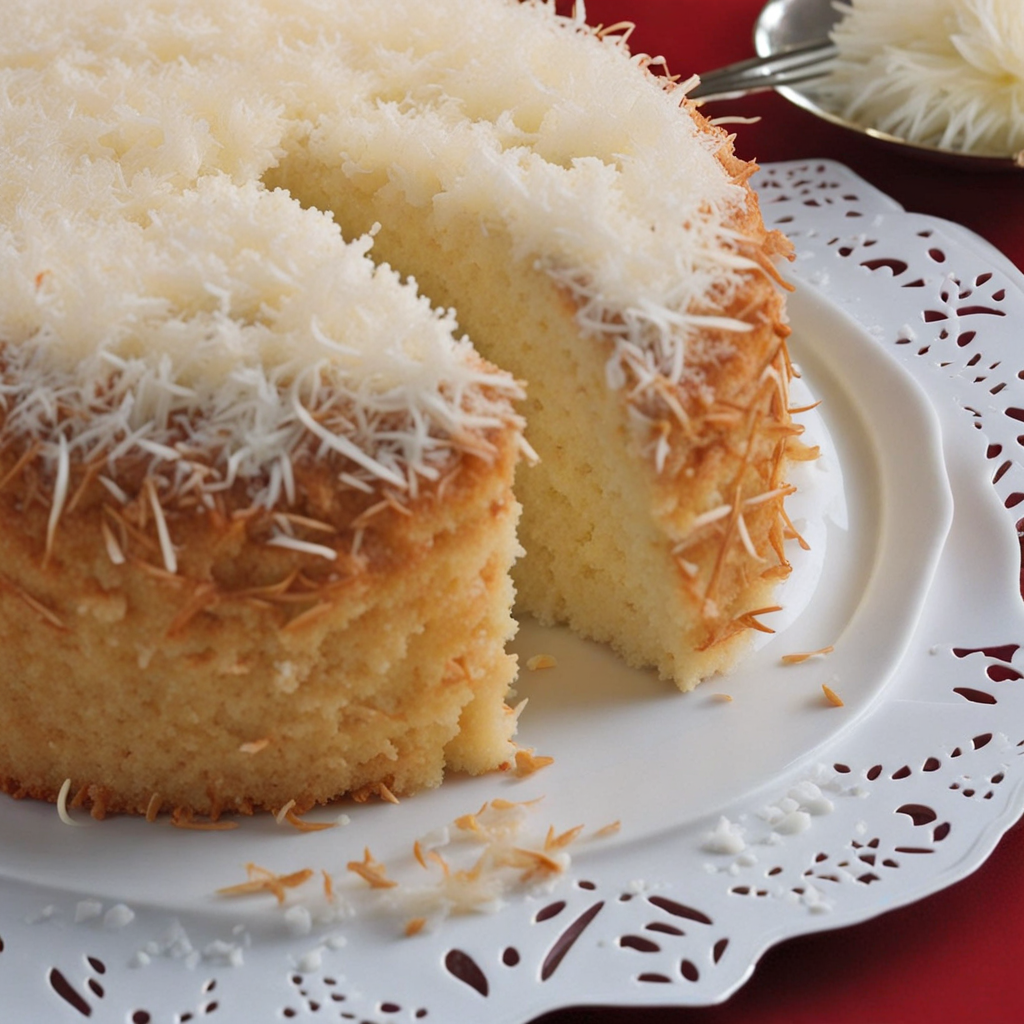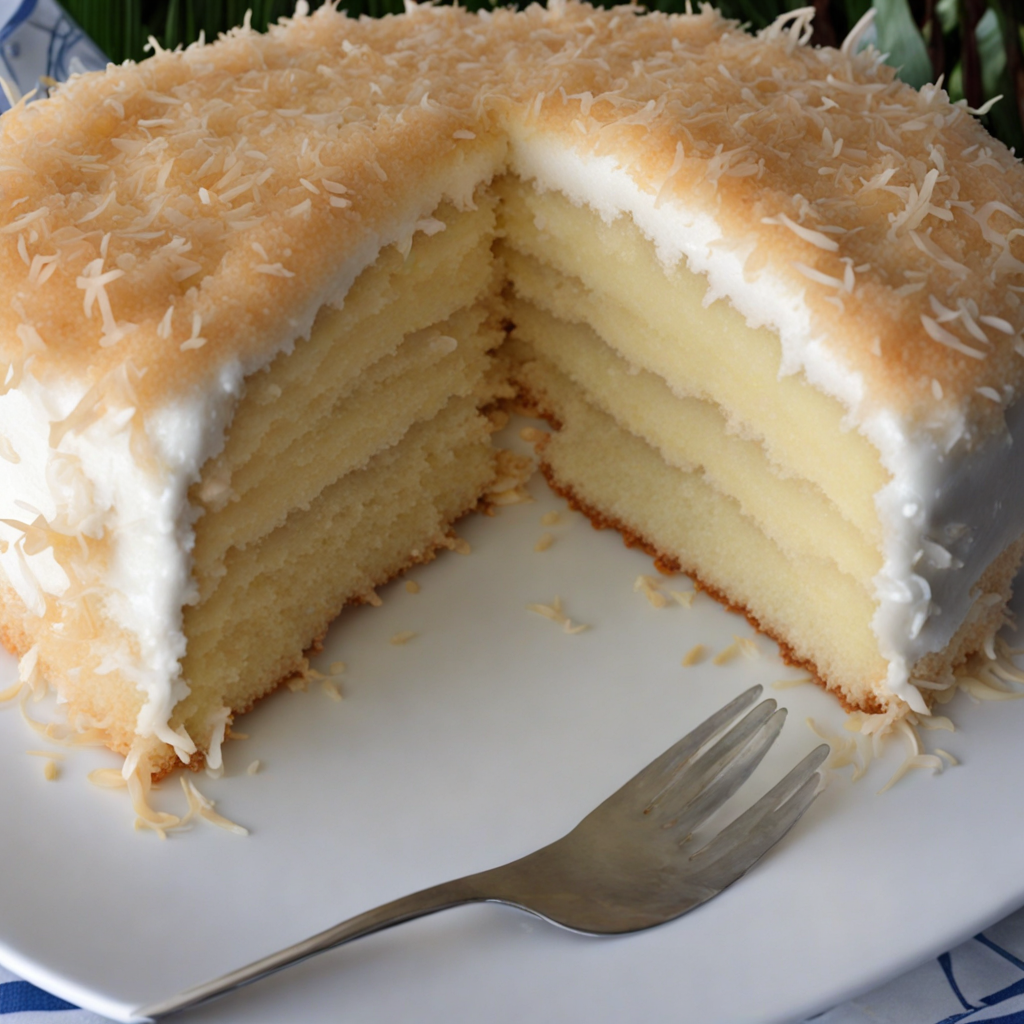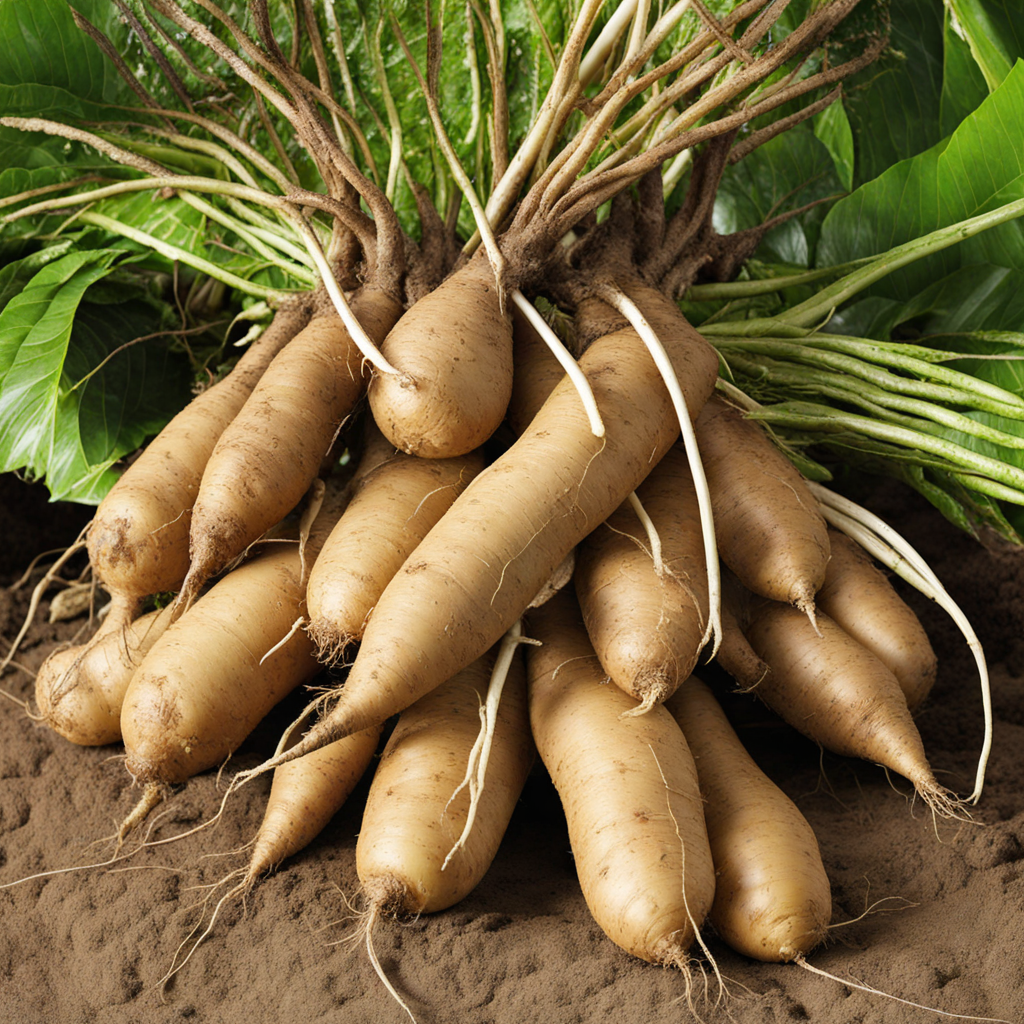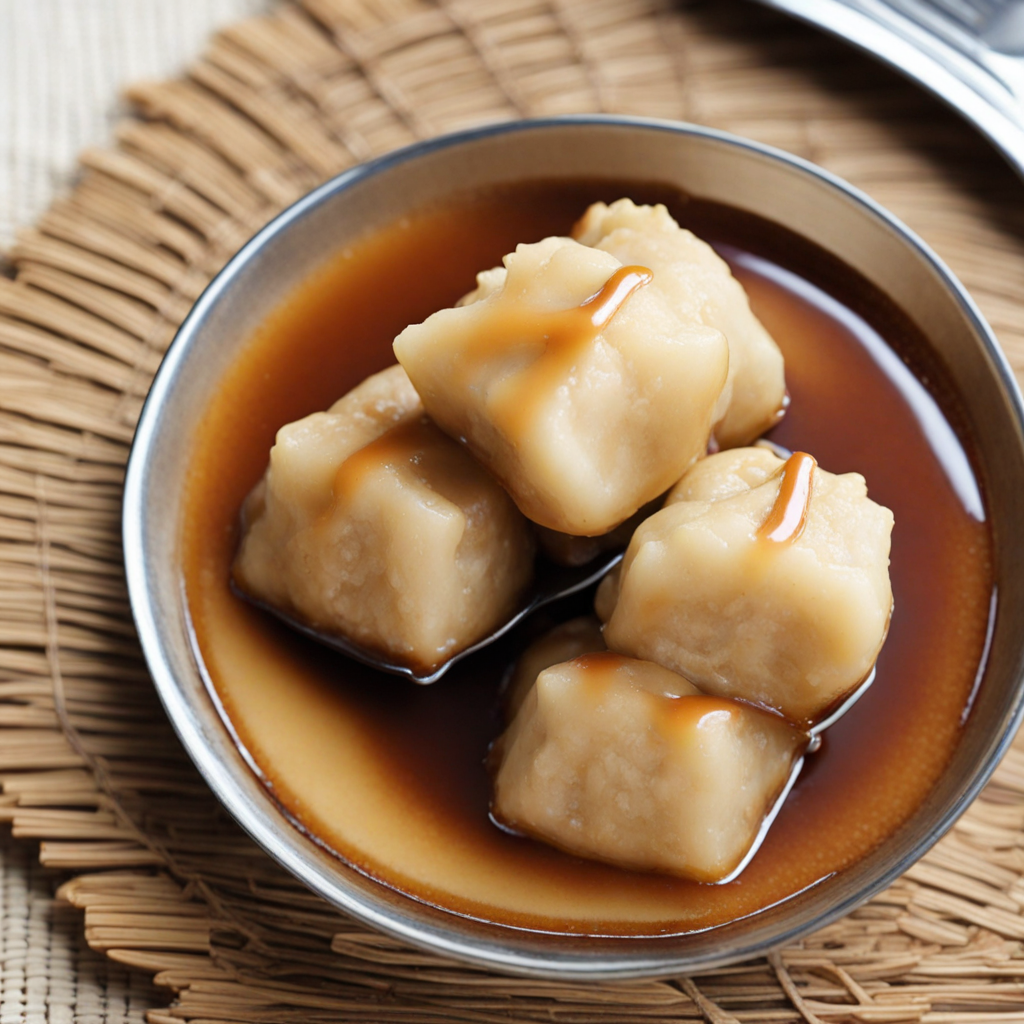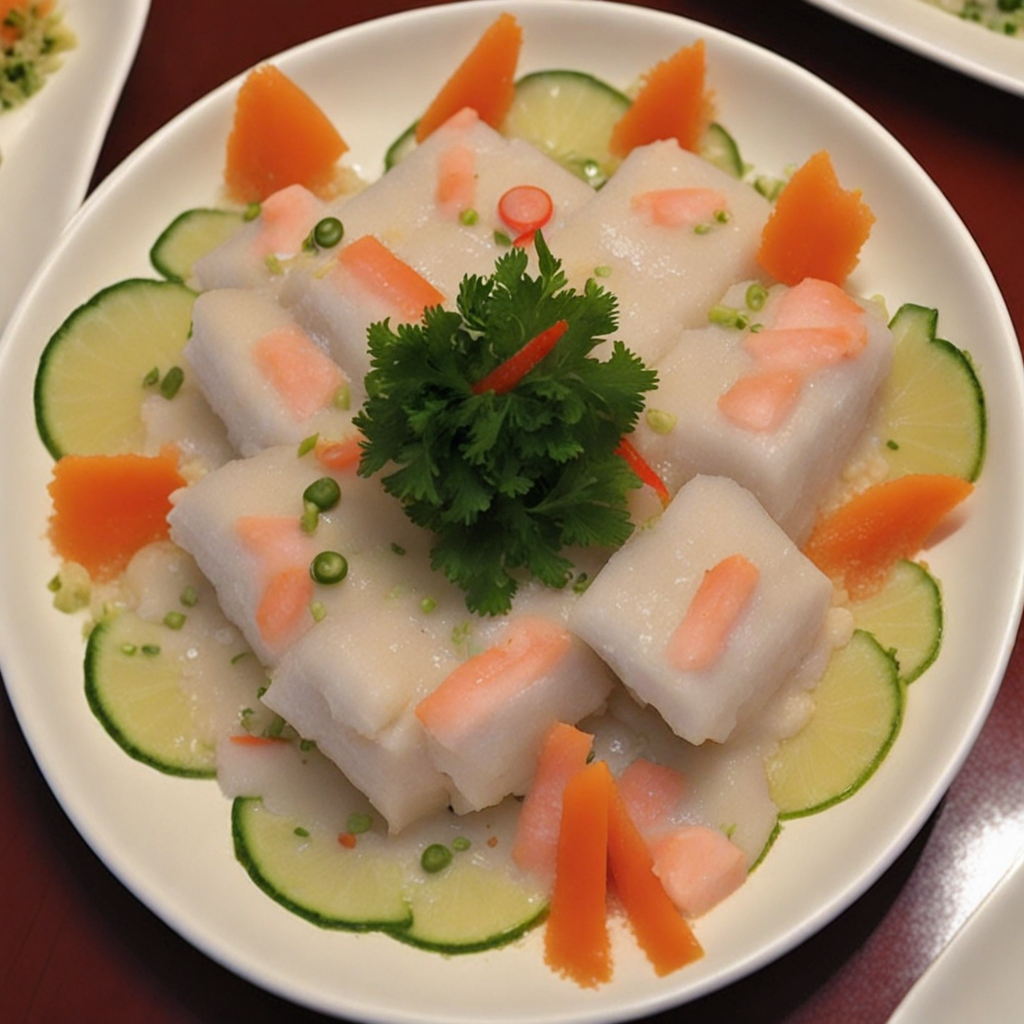Coconut Cake
Coconut Cake from Tonga is a delightful dessert that embodies the essence of tropical flavors. This cake is primarily made with fresh coconut, which brings a rich, creamy texture and a subtle sweetness that enhances every bite. The cake itself is often moist and tender, achieved through the careful blending of coconut milk and grated coconut, creating a luscious base that is both indulgent and satisfying. The use of simple, natural ingredients allows the coconut to shine, making it a beloved treat among locals and visitors alike. As you take a bite of Tongan Coconut Cake, you’ll notice its delicate sweetness complemented by a hint of vanilla and sometimes a touch of lemon zest, which adds an uplifting brightness. The cake is often topped with a fluffy coconut frosting, made from whipped cream or buttercream mixed with desiccated coconut, creating a delightful contrast in textures. Each mouthful is a celebration of flavors, transporting you to the sunny shores of Tonga with its tropical aroma and taste. Traditionally served at special occasions and family gatherings, Coconut Cake is not just a dessert; it’s a symbol of Tongan hospitality and culture. Enjoyed with a cup of tea or shared among friends, this cake is a perfect way to experience the warmth of Tongan traditions. Whether you’re indulging in a slice at a local bakery or making it at home, Tongan Coconut Cake offers a unique and memorable taste that is sure to awaken your palate and leave you craving more.
How It Became This Dish
An Engaging History of Keki ‘Akau: The Tongan Coconut Cake Keki ‘akau, a beloved traditional cake from the islands of Tonga, is more than just a delightful treat; it is a symbol of the Tongan way of life, deeply intertwined with the nation’s cultural heritage and communal traditions. This coconut cake, with its simple ingredients and rich flavors, offers insight into the history and values of the Tongan people, reflecting their connection to the land, sea, and community. #### Origins of Keki ‘Akau The origins of keki ‘akau can be traced back to the rich agricultural practices of Tonga, where coconut palms (Cocos nucifera) are a staple of everyday life. Introduced to the islands by early Polynesian navigators, coconuts quickly became an essential resource, utilized for food, oil, and fiber. The word "keki" translates to "cake," while "'akau" means "coconut" in Tongan, indicating that the primary ingredient is the local coconut. Historically, keki ‘akau is believed to have been developed in the 19th century, although the use of coconut in Tongan cuisine dates back centuries. The cake likely emerged as a way to utilize the abundant coconut harvest, marrying the sweetness of fresh grated coconut with simple staples like flour, sugar, and eggs. The Tongan people have a long tradition of creating baked goods, which often feature local ingredients and reflect the climatic conditions of the islands. #### Cultural Significance In Tongan culture, food is a cornerstone of social interaction, and keki ‘akau holds a special place in various cultural practices and celebrations. It is often prepared for significant events such as birthdays, weddings, and funerals, where it serves not only as a treat but as a symbol of hospitality and generosity. Sharing food is a way to strengthen community ties, and keki ‘akau has become a staple in these communal gatherings. The preparation of keki ‘akau is often a communal activity, where family and friends gather to bake the cake together. This practice fosters a sense of togetherness and reinforces the importance of relationships within Tongan culture. The cake is usually enjoyed with a cup of kava (a traditional ceremonial drink made from the root of the kava plant), enhancing its role as a social food that brings people together in a relaxed and friendly atmosphere. #### Ingredients and Preparation The traditional recipe for keki ‘akau is simple yet versatile, reflecting the Tongan ethos of using local resources. The key ingredients include grated fresh coconut, flour, sugar, eggs, and baking powder. Variations may include the addition of vanilla, spices, or even fruits, depending on regional preferences and available ingredients. The preparation involves combining the dry ingredients with the wet ingredients, mixing them until a smooth batter is formed. The grated coconut adds moisture and texture, making the cake rich and flavorful. The mixture is poured into a baking dish and baked until golden brown, resulting in a cake that is slightly dense yet soft, with a delightful coconut aroma. Once baked, keki ‘akau is often served warm or at room temperature, sometimes dusted with powdered sugar or accompanied by fresh fruit. It can also be enjoyed with a dollop of whipped cream or a scoop of local ice cream, showcasing its adaptability to various palates. #### Development Over Time As Tonga has experienced various influences throughout its history, so too has keki ‘akau evolved. The arrival of European missionaries in the 19th century introduced new baking techniques and ingredients, such as refined sugar and modern ovens, which have influenced how keki ‘akau is prepared today. Additionally, the globalization of food culture has led to the incorporation of new flavors and styles, with some modern recipes incorporating chocolate, nuts, or tropical fruits. Despite these changes, the essence of keki ‘akau remains rooted in Tongan traditions. While contemporary Tongan bakers may experiment with the cake, they often honor the traditional methods and ingredients that have been passed down through generations. This balance of tradition and innovation reflects the broader Tongan experience, where the preservation of cultural heritage coexists with the influences of a changing world. #### Keki ‘Akau in Contemporary Culture In modern Tonga, keki ‘akau continues to be a beloved dessert, not only enjoyed during special occasions but also as a staple in everyday life. It is commonly found in local bakeries, markets, and homes across the islands. The cake has also gained popularity among Tongan expatriates and those who have embraced Tongan culture abroad, serving as a taste of home and a reminder of their roots. Social media has played a significant role in the resurgence of traditional recipes, including keki ‘akau. Tongan food bloggers and influencers often share their takes on the cake, showcasing its versatility and encouraging others to explore Tongan cuisine. This digital presence has allowed keki ‘akau to reach a wider audience, promoting Tongan culinary traditions and inviting people from diverse backgrounds to appreciate the flavors of the islands. #### Conclusion Keki ‘akau is more than just a cake; it is a delicious representation of Tongan culture, history, and communal values. As it has evolved over the years, the cake has maintained its significance as a symbol of hospitality and togetherness, bridging generations and preserving the culinary heritage of Tonga. In today’s globalized world, keki ‘akau stands as a testament to the resilience of tradition while embracing contemporary influences, allowing this cherished cake to thrive in both local and international communities. Whether enjoyed at a celebration, a casual gathering, or as a personal indulgence, keki ‘akau continues to bring people together, one delicious slice at a time.
You may like
Discover local flavors from Tonga


